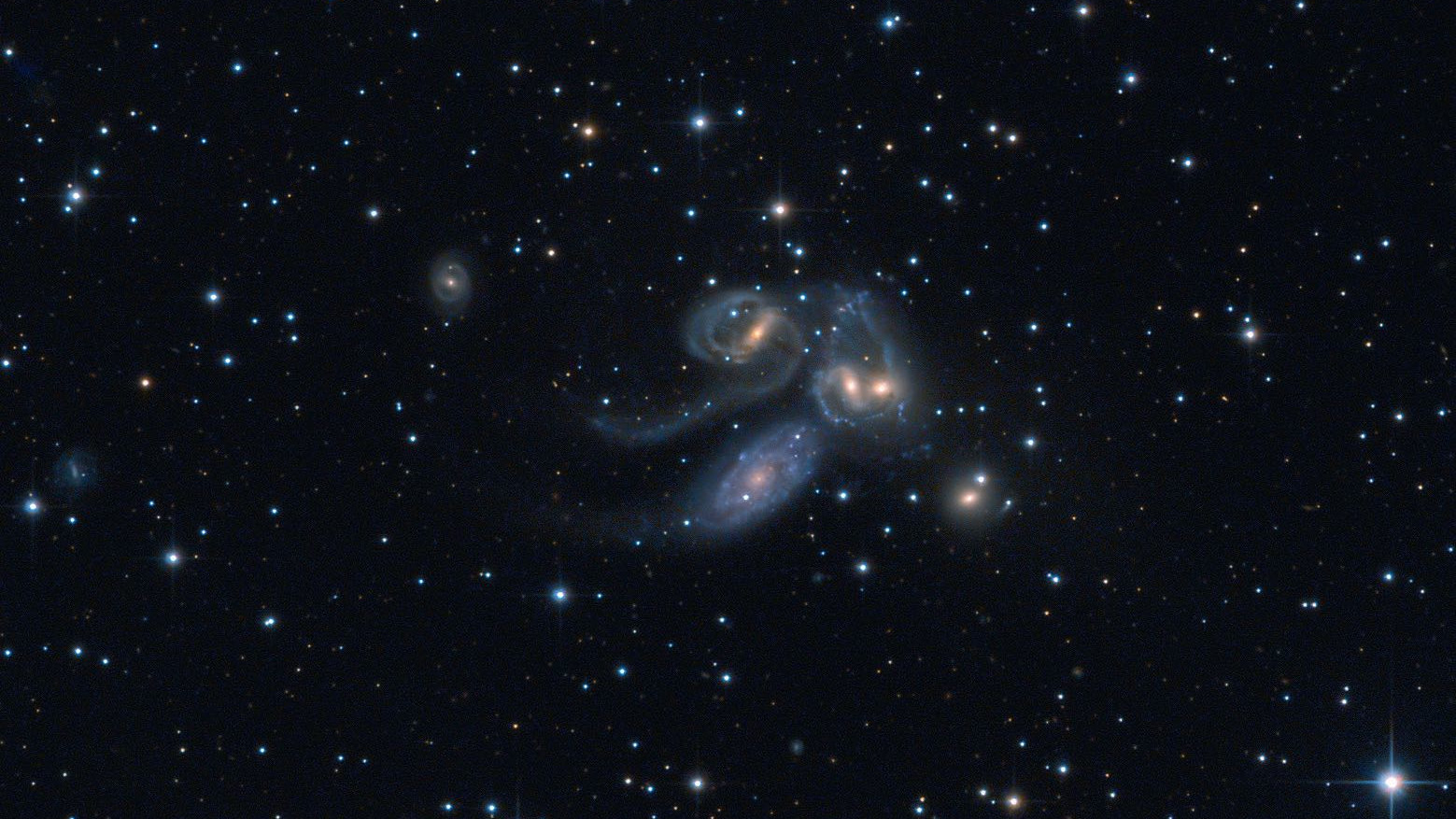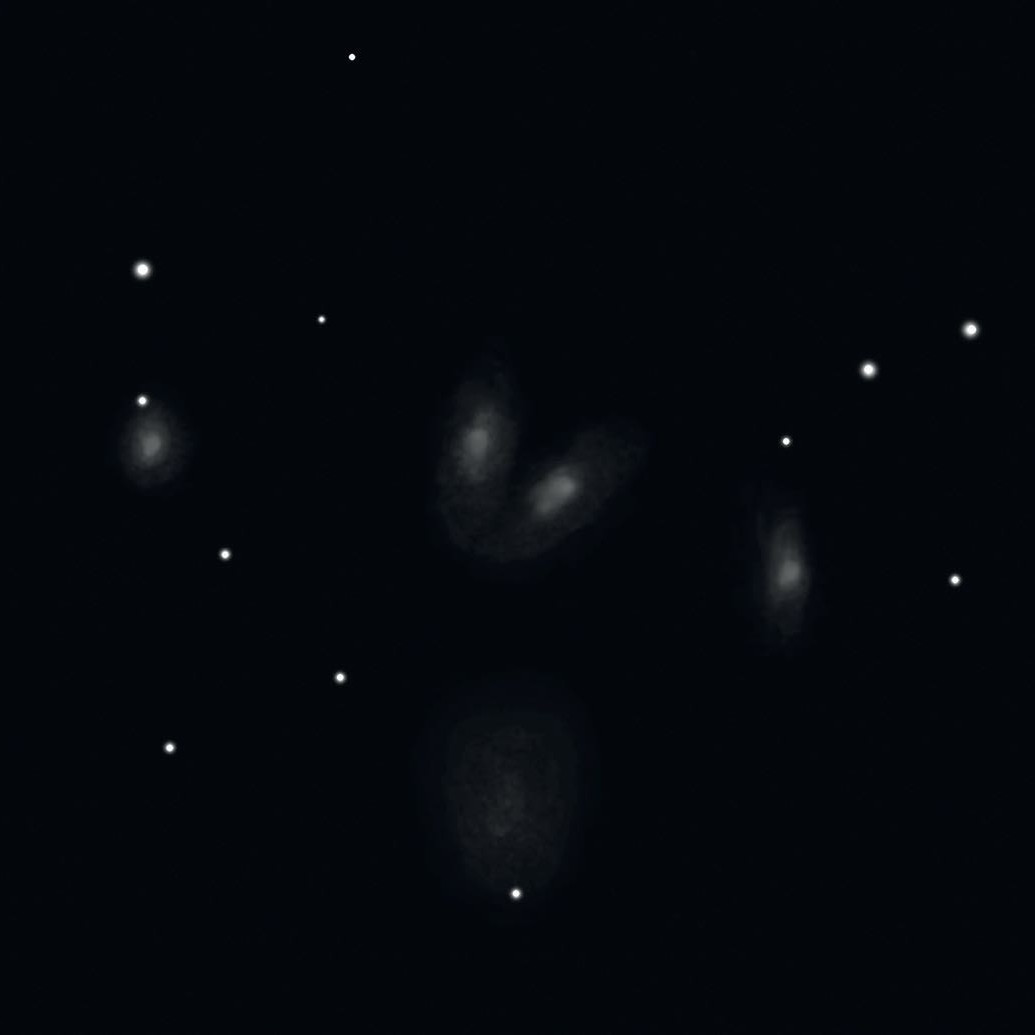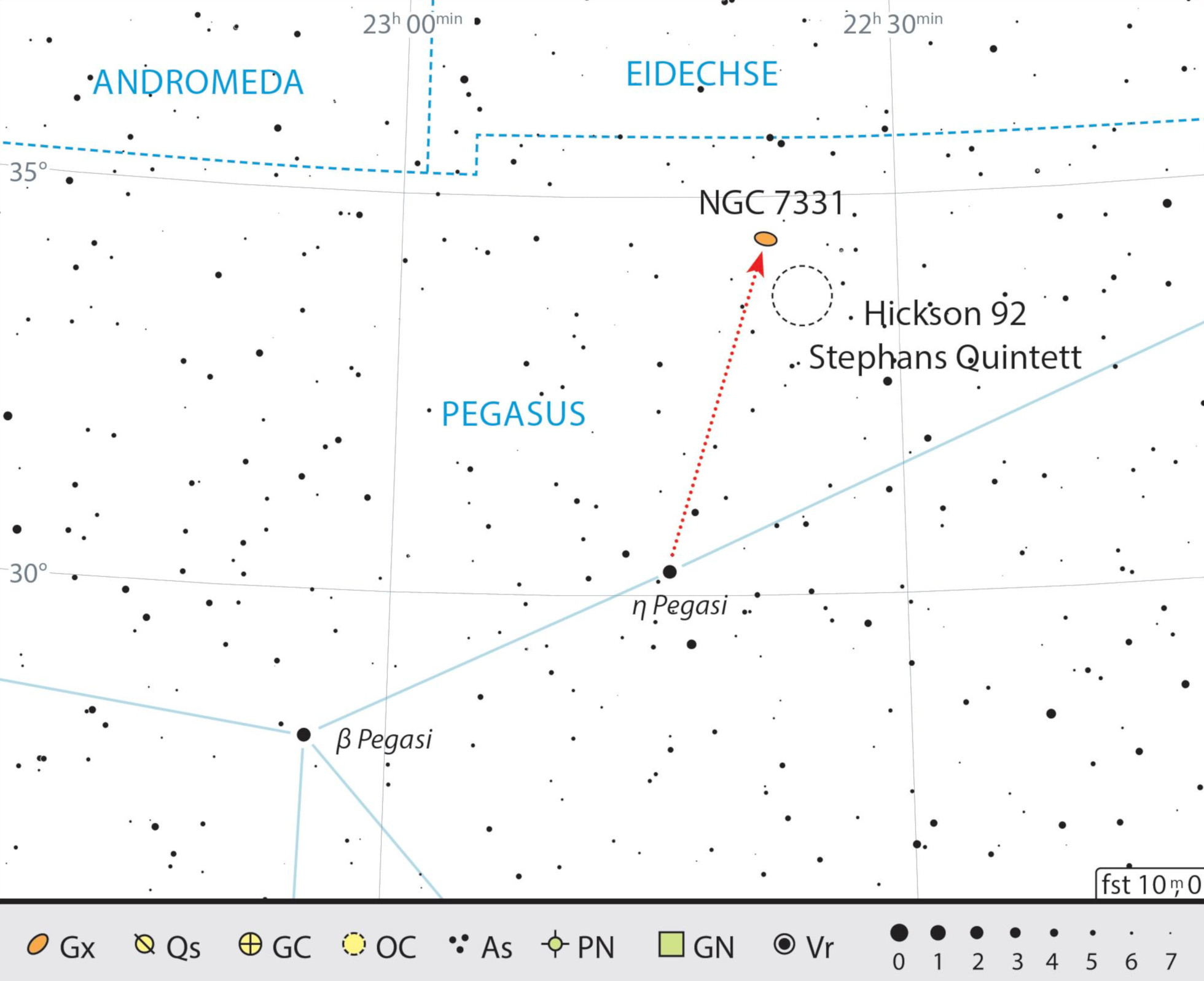Hickson 92 - the compact galaxy group known as Stephan’s Quintet
As early as 1877, French astronomer Stephan discovered this group of 5 interacting galaxies – a target for telescopes with an aperture of 8 inches or more.
 Stephan's Quintet: NGC 7320C (top left), NGC 7319, NGC 7318B and NGC 7318A and
NGC 7217 (bottom right). NGC 7320 (bottom left) does not belong to the group. Wolfgang Promper
Stephan's Quintet: NGC 7320C (top left), NGC 7319, NGC 7318B and NGC 7318A and
NGC 7217 (bottom right). NGC 7320 (bottom left) does not belong to the group. Wolfgang Promper
The autumn sky is dominated by the striking constellation of Pegasus, whose four bright stars form the Great Square of Pegasus. There are numerous galaxies in this region, the brightest of which is NGC 7331. It serves as a signpost to the well-known galaxy group known as Stephan’s Quintet. NGC 7331 is not visible through binoculars, but even in a small telescope it is visible as a diffuse oval spot with a bright core region. To find it, pan your telescope from η Pegasi 5.5° to the north to two magnitude 6 stars. NGC 7331 is around 1° south of here. The galaxy appears large and bright in telescopes with an aperture of 20cm or more.
A catalogue of galaxy groups
In the 1970s, Canadian astronomer Paul Hickson searched for groups of galaxies on the Palomar photographic plates. His first results were published in 1982 and the final catalogue of 100 galaxy groups was published in 1994. The Hickson catalogue is particularly interesting for amateur astronomers, as a large number of groups of galaxies can be observed even with medium-sized telescopes. However, Paul Hickson was not the first to discover the galaxy group known as Stephan’s Quintet: the first observation was made by the French astronomer Édouard Jean-Marie Stephan in 1877. Stephan’s Quintett is 270 light-years away and is located 30' southwest of NGC 7331. It is the most well-known galaxy group and carries the designation Hickson 92.
Five interacting galaxies
 Drawing of Stephan’s quintet as viewed through an
18 inch Dobsonian at 300× magnification. Rainer Mannoff
Drawing of Stephan’s quintet as viewed through an
18 inch Dobsonian at 300× magnification. Rainer MannoffThe galaxy group consists of the five interacting galaxies NGC 7317, NGC 7318A, NGC 7318B, NGC 7319, and NGC 7320. Since the galaxies have a brightness of around magnitude 13, these are also best observed with a telescope aperture of 20cm or more. However, what you will see of the quintet also depends on the sky quality.
Some will see a faint, diffuse speck of light with brighter nodes, even in a small telescope. In larger telescopes, galaxy NGC 7320 should be visible to the east, the galaxy pair NGC 7318 A/B to the west, and galaxy NGC 7319 to the east thereof. In the south-west there is also a magnitude 13 star, which is surrounded by galaxy NGC 7317.
Foreground galaxy
Galaxy NGC 7320 was originally considered to be a member of the group of five, but is actually a foreground galaxy at a distance of 35 million light years. To keep the quintet designation, it was decided to count NGC 7320C instead. This small, round galaxy is located 5' north-east of NGC 7320 and can only be seen with averted vision under the darkest sky.
 Finding chart for NGC 7331, together with the galaxy group Hickson 92 located to the south-west. J. Scholten
Finding chart for NGC 7331, together with the galaxy group Hickson 92 located to the south-west. J. ScholtenAuthor: Michael Feiler / Licence: Oculum-Verlag GmbH
